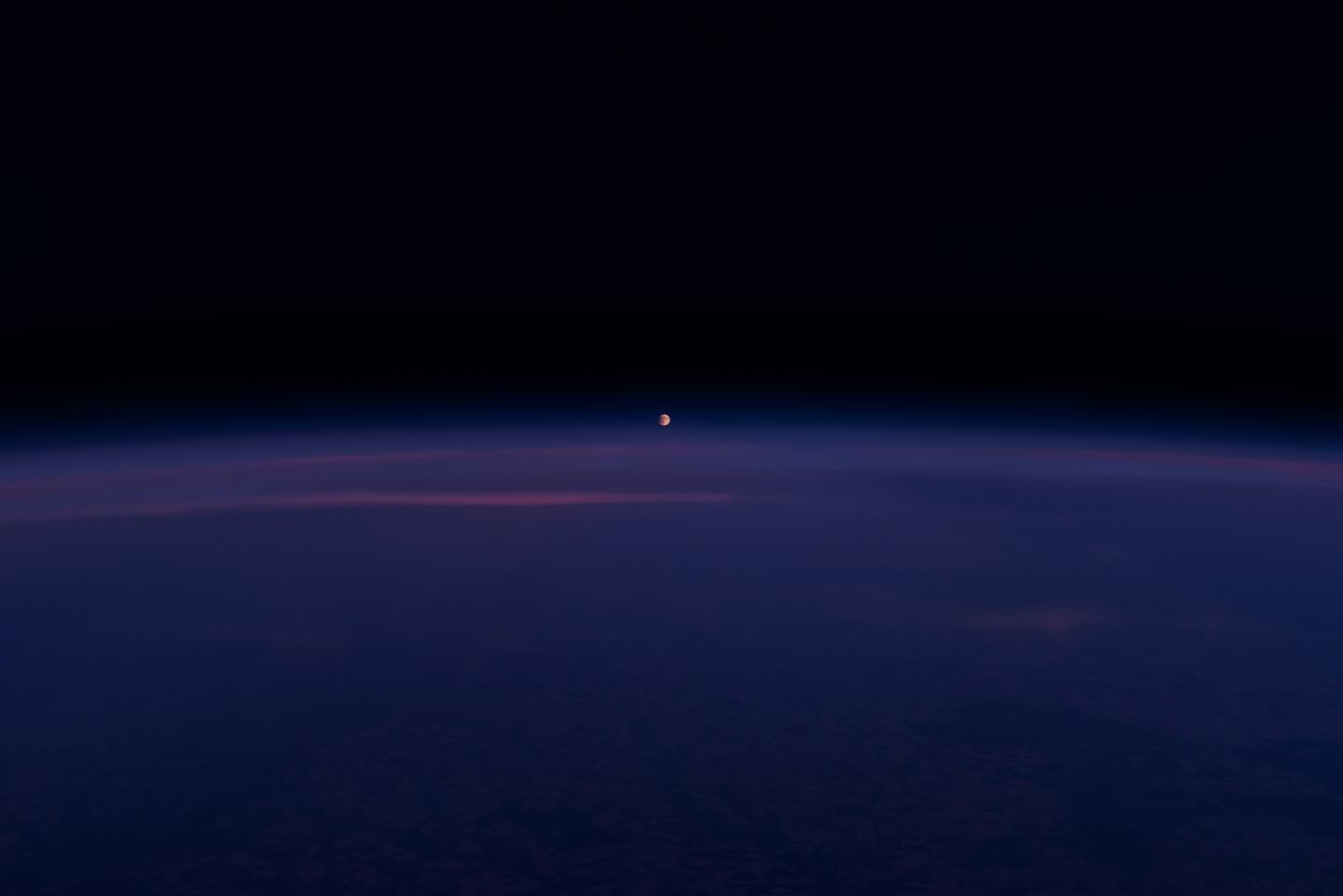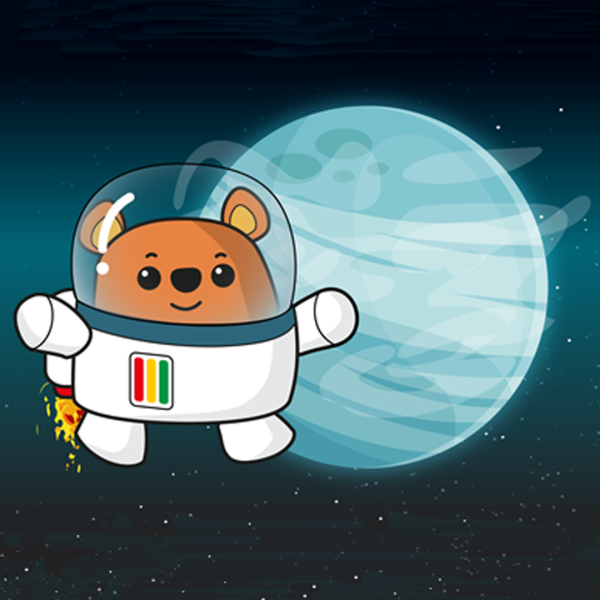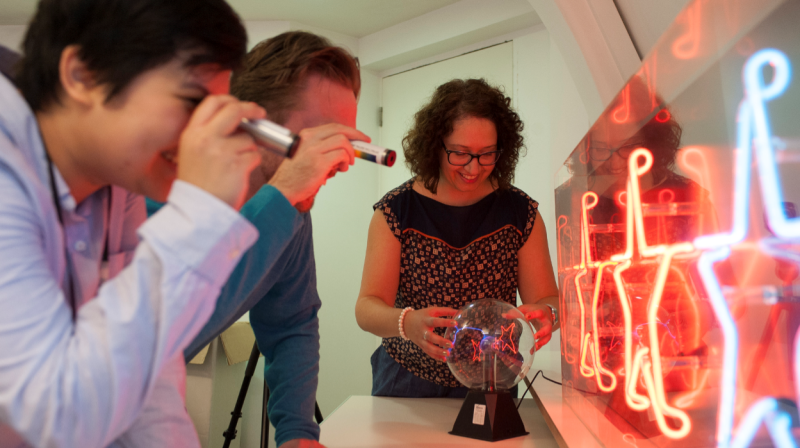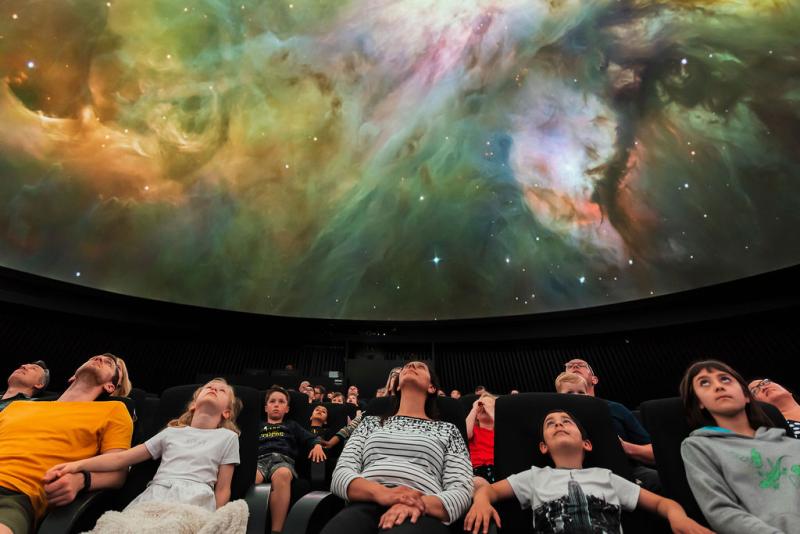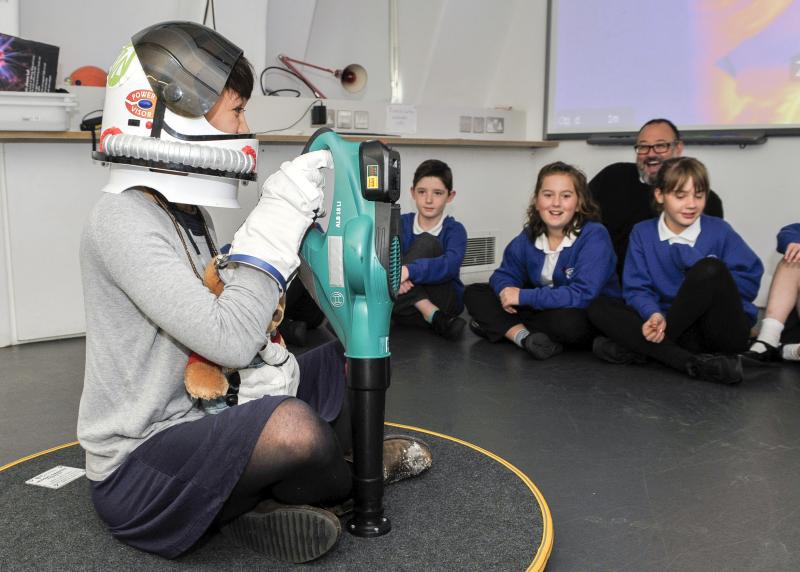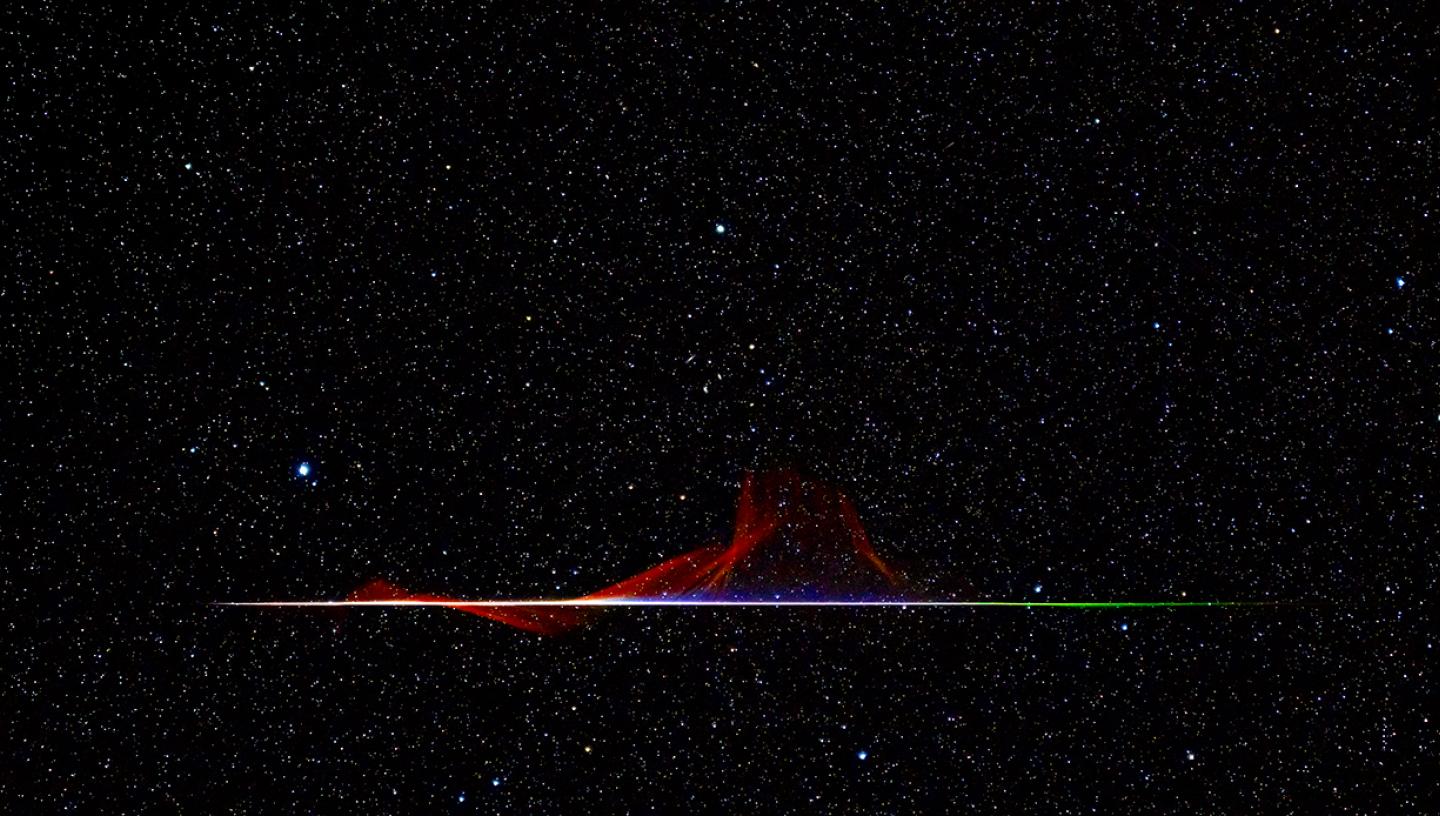
Discover what to see in the night sky in January 2022, including the Quadrantid meteor shower and wonderful winter constellations
Top 3 things to see in the night sky in January
- Throughout the month - Explore some winter constellations
- 3/4 January - Look up! It's the peak of the Quadrantid meteor shower.
- 14 January - Spot Mercury, Jupiter and Saturn above the western horizon.
(Details given are for London and may vary for other parts of the UK)
Look Up! podcast
Subscribe and listen to the Royal Observatory Greenwich's podcast Look Up! As well as taking you through what to see in the night sky each month, Royal Observatory Greenwich astronomers pick a topic to talk about.
Our next podcast will be available in February and we've got some interesting stories lined up to talk to you about!
Our podcast is available on iTunes and SoundCloud
Astronomy in January 2022: key events and what to see
Throughout the month: Wonderful winter constellations
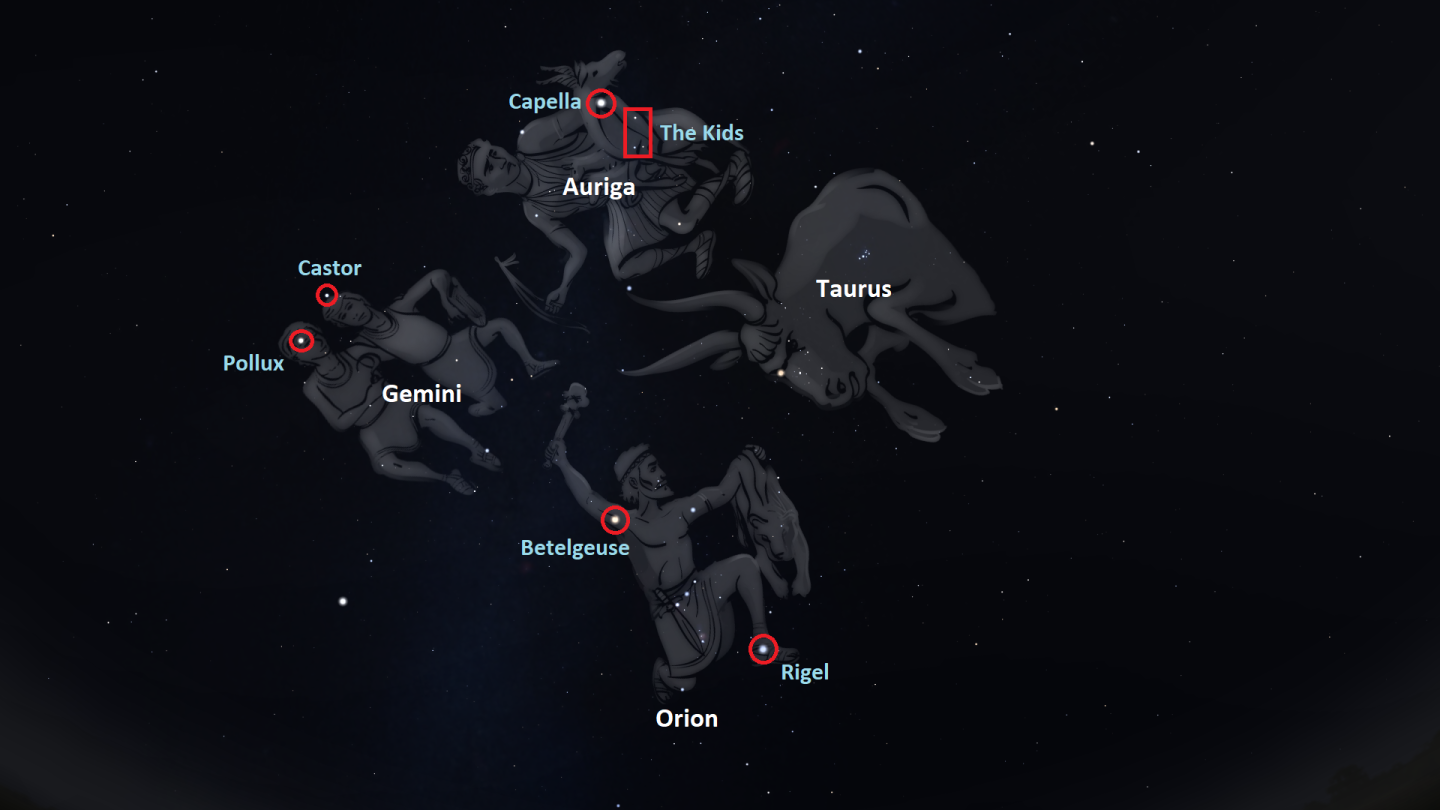
With winter well underway, the long nights are perfect for stargazing, so why not use them to explore some of the fantastic winter constellations. Begin your journey at Orion - draw a line from Rigel through to Betelgeuse (his left foot through to his right shoulder), extend it out to end up in the constellation Gemini. This constellation represents the mythical twins Castor and Pollux for whom two brightest stars in the constellation are named. The twins were said to be inseparable and when it came time for Castor to move on into the next life, Pollux begged his father to grant his twin with immortality so that they could stay in the night sky forever.
Lying to the right of the twins and perilously close to the horns of Taurus the Bull, is the constellation of Auriga the Charioteer, formed from a circular pattern of stars. The brightest star in Auriga is Capella and marks the Charioteer’s left shoulder. Nearby Capella is a tiny asterism consisting of a triangle of stars. This asterism is known as ‘The Kids’ because the name Capella is Latin for female goat.
3/4 January: The peak of the Quadrantid meteor shower
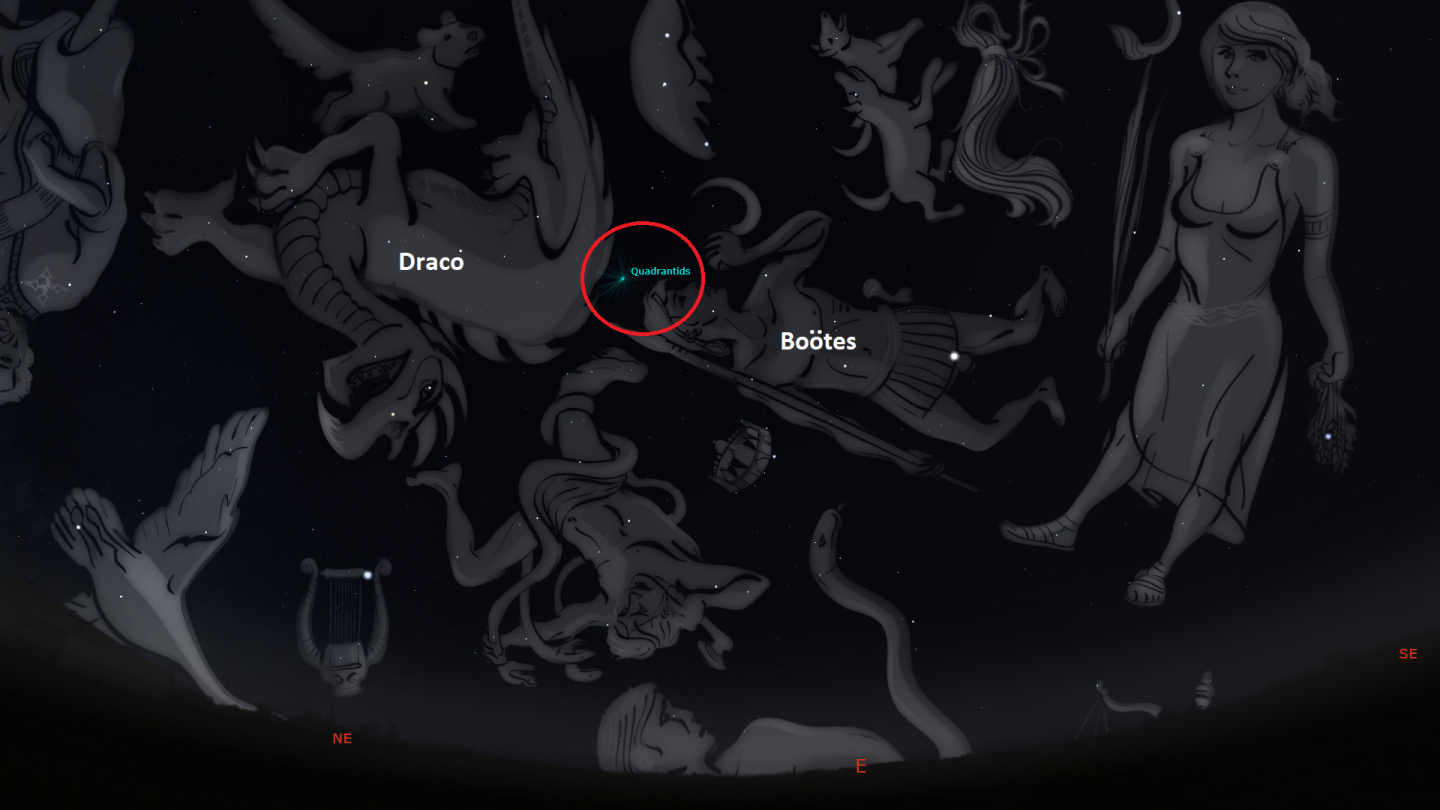
The new year begins with a bang with the peak of the Quadrantid meteor shower taking place on the night of 3 January. This is the first major annual meteor shower of the year with up to 120 meteors per hour at the peak. The Moon will be in an ideal phase for the Quadrantids with new moon occurring on the 2nd, so dark skies will make meteor spotting that much easier. The radiant of the Quadrantids falls within the boundaries of what is nowadays the constellation Boӧtes, though the shower owes its name to the now defunct constellation of Quadrans Muralis which was left off the list of constellations accepted by the International Astronomical Union in 1922.
Most meteor showers are produced when the Earth moves through the dusty trail left behind by comets, but the Quadrantid meteor shower is produced by debris left behind by an asteroid called 2003 EH1 which takes 5.5 years to orbit the Sun. The best time to spot some meteors will be in the early hours of the morning of 4 January when the radiant for the meteor shower, or the point from which all meteors appear to emanate from during a meteor shower, is higher up in the sky.
14 January: A trio of planets after sunset
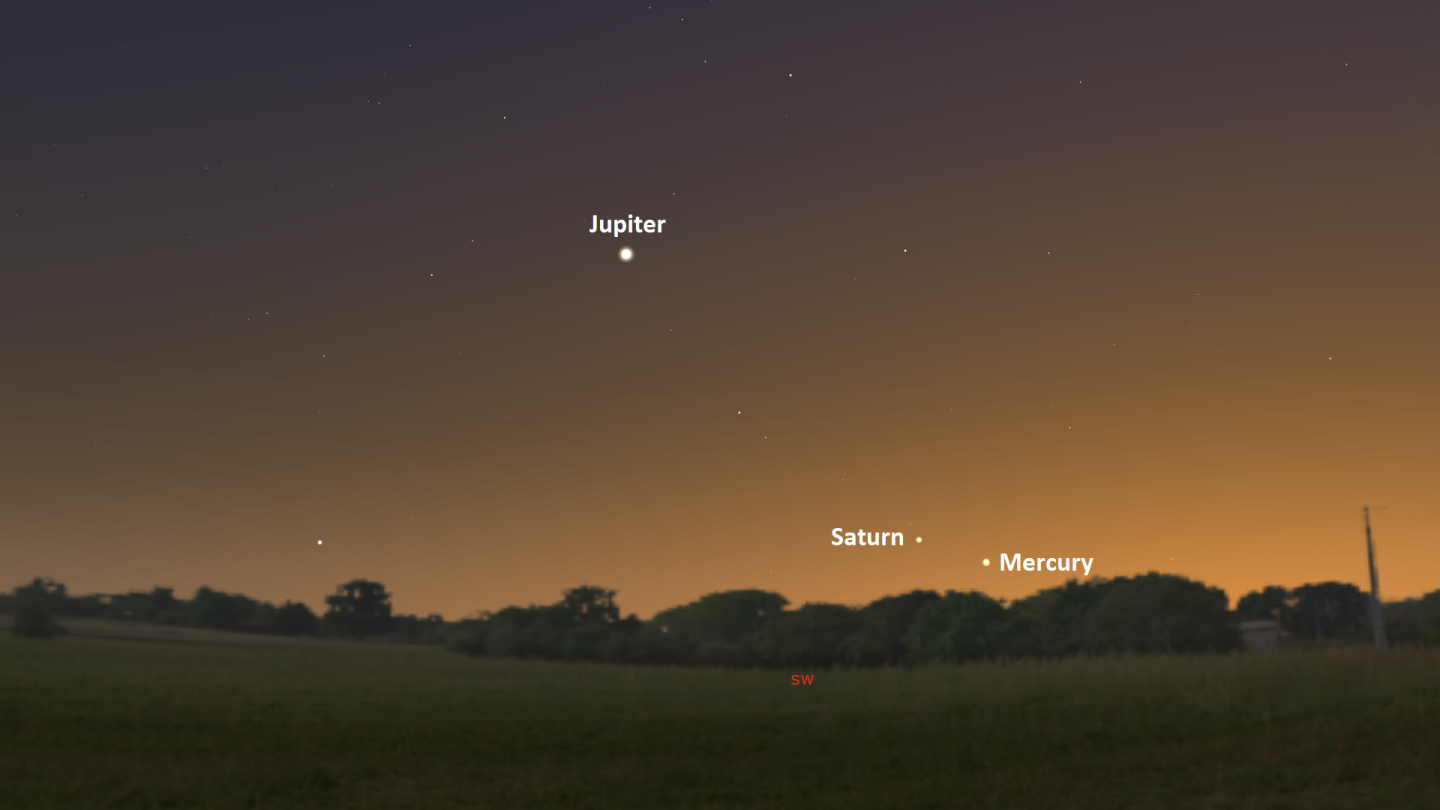
Look towards the west just after sunset and you’ll spot Jupiter, Saturn and Mercury, with Mercury appearing similar in brightness to Saturn. Both Saturn and Mercury will be low above the western horizon so you will need an unobstructed view to gaze at these two planets. The distant ice giants Uranus and Neptune will be up too – Uranus’ brightness will be close to the limiting magnitude that the eye can see, so it will be a challenge. If you want to test your eyesight, wait for a moonless night, and see if you can find the planet lying in the constellation Aries. Neptune will be too faint to see by eye, so you will need to use a pair of binoculars or a telescope.
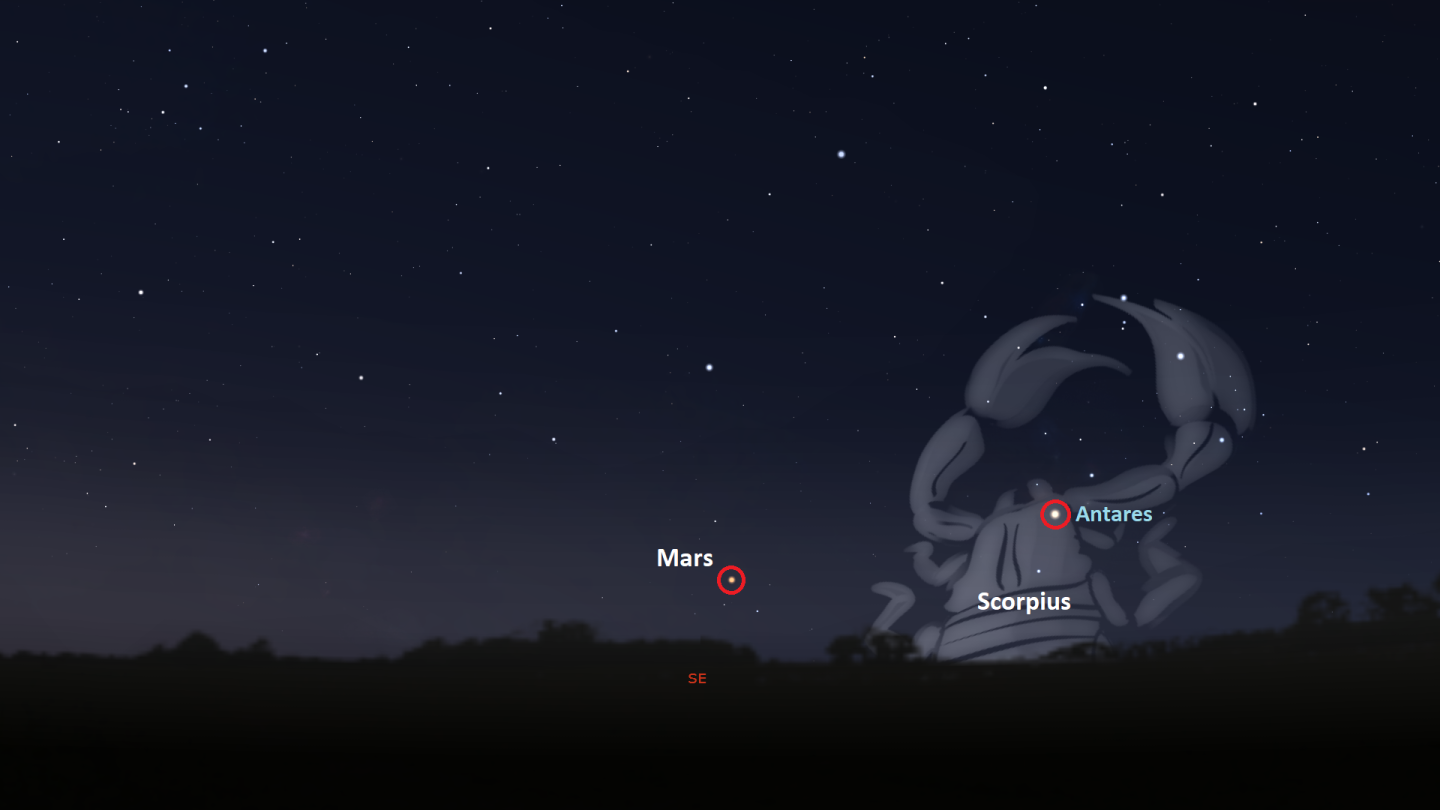
If you’re a fan of the red planet, Mars, you’ll need to be an early bird. Mars will lie low above the south-eastern horizon around sunrise and should be easy to spot due to its vibrant red colour. But don’t be fooled by another bright red coloured object which will be up at the same time too. Lying towards the right of Mars, you’ll see the star Antares which is the brightest star in the constellation of Scorpius. Often referred to as the heart of the Scorpion, Antares is Greek for ‘rival of Ares’ which means the rival of Mars.
17 January: The Wolf Moon
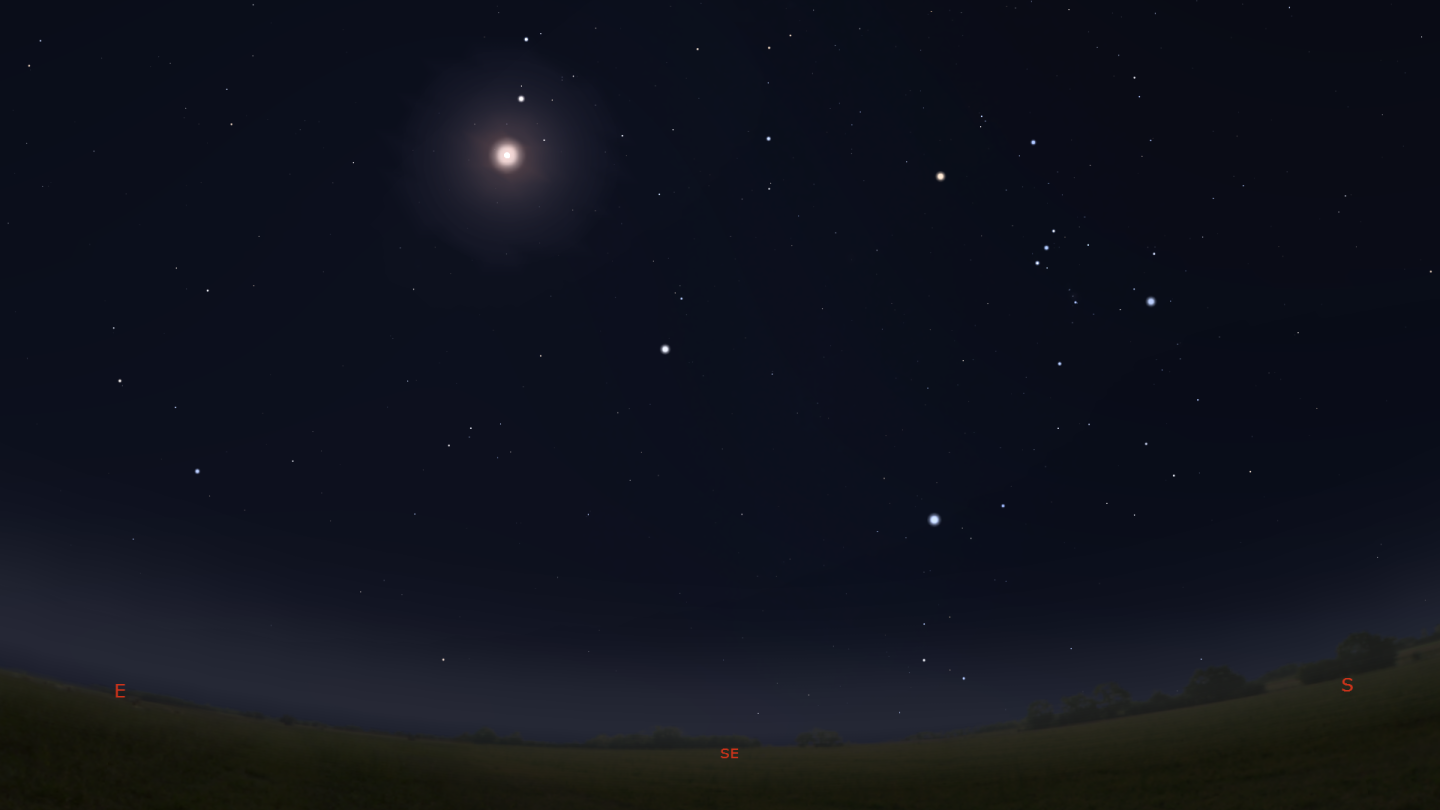
Full moon occurs on 17 January and is named the Wolf Moon after the howling of hungry wolves lamenting the scarcity of food in midwinter. The light from a full moon washes out the light of fainter objects in the night sky, so if you are keen on observing some fainter targets, then it's best to do so on a moonless night. If you do want to do some lunar observing, then contrary to what you might think, full moon isn’t the best time to observe it. The glare causes detail to be lost, so if you want to enjoy the spectacular craters and mountains, then there are two prime windows to do so.
The first window opens up a few days after new moon and continues to a few days past first quarter. For January, this means your first prime viewing window is from the 6th – 11th. The advantage of this window is that the Moon will be up in the evening. The second prime viewing window opens up from just before last quarter through to a few days before new moon, so from the 23rd – 28th, but this does mean you’ll need to be up in the early hours of the morning. During these viewing windows, you’ll be able to see the craters in crisp detail as well as shadows on the lunar surface.
Southern Hemisphere: The Eta Carinae Nebula
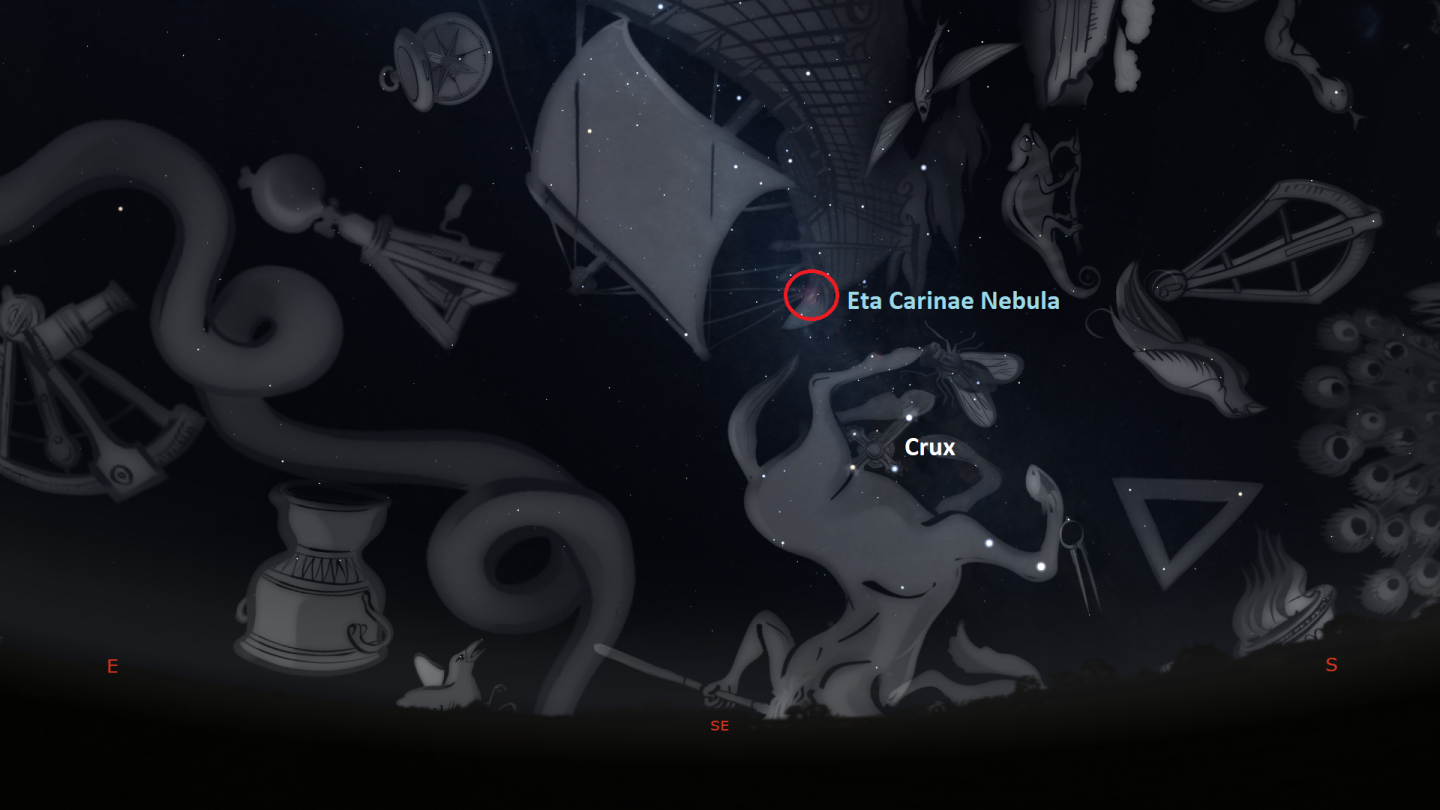
For those in the Southern Hemisphere, the shorter nights may mean less time for stargazing, but there are still some spectacular sights to look at including the famous Eta Carinae Nebula. Located in the constellation Carina, which represents the keel of the ship Argo, the Eta Carinae Nebula is one of the largest star-forming regions in our Milky Way Galaxy. Located over 7,000 light-years away from us, it spans a distance of over 300 light-years. The nebula is named after the star Eta Carinae which isn’t a single star at all – it is in fact a binary star system.
The stars that form this binary are behemoths, one with a mass 100 times that of the Sun, the other a mass that is 30 times the Sun's mass. The two stars are locked in a cosmic dance and take only 5.5 years to complete their orbits around each other. In images of the nebula, the largest star can be seen as the brightest point of light located near the centre. This star is nearing the end of its life and when it does, which will be in the next million years or so, it will explode as a supernova releasing enormous amounts of energy.
The Moon's phases this month
- 2 January: new moon (6:34pm)
- 9 January: first quarter moon (6:11pm)
- 17 January: full moon (11:49pm)
- 25 January: last quarter moon (1:41pm)
'Outer Space © Peter Hoszang' is one of the shortlisted images from the 2021 Astronomy Photographer of the Year competition. See the winning and other shortlisted images of the competition in a new exhibition at the National Maritime Museum.
Stargazing Tips
- When looking at faint objects such as stars, nebulae, the Milky Way and other galaxies it is important to allow your eyes to adapt to the dark – so that you can achieve better night vision.
- Allow 15 minutes for your eyes to become sensitive in the dark and remember not to look at your mobile phone or any other bright device when stargazing.
- If you're using a star app on your phone, switch on the red night vision mode.
Need a stargazing telescope of binoculars? Check out our range of high quality observing equipment recommended by Royal Observatory Greenwich astronomers.
See our range of observing equipment
Share your pictures
This month's banner image is 'A Colourful Quadrantid Meteor' by Frank Kuszaj. It is the winning image in the Astronomy Photographer of the Year 2021 Planets, Comets and Asteroids category.
Do you have any images of the night sky? If so, why not share your photos via our Royal Observatory Astrophotography Facebook group.
You can also connect with us via Twitter: @ROGAstronomers
Planetarium Shows
Join us for live planetarium shows presented by astronomers from the Royal Observatory Greenwich
Royal Observatory Greenwich YouTube Channel
Subscribe to our YouTube channel and join us on a journey through time and space as we explore our Universe. You'll find a selection of videos on our channel, including our Observatory Online video series in which our astronomers explore different topics in Astronomy and Space Exploration.
Resources for teachers and students
The Royal Observatory Greenwich's learning team has also created:
- Free animated videos that answer the biggest questions in astronomy and free resources to go alongside them.
- A whole host of podcasts featuring interviews with real space scientists, astronauts and active researchers working in UK universities.
- A 'learning at home' hub which contains a suite of resources for you to use at home.
